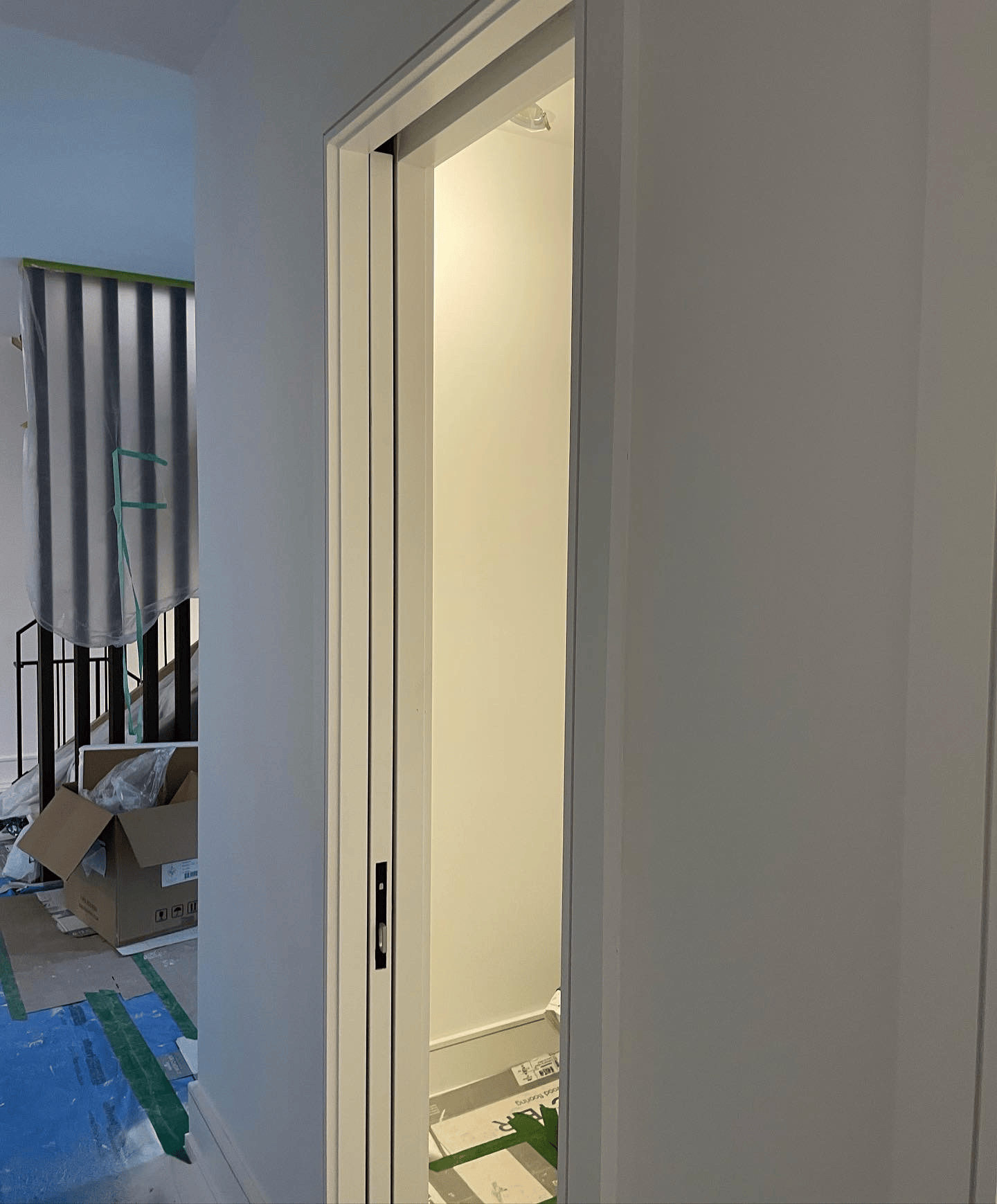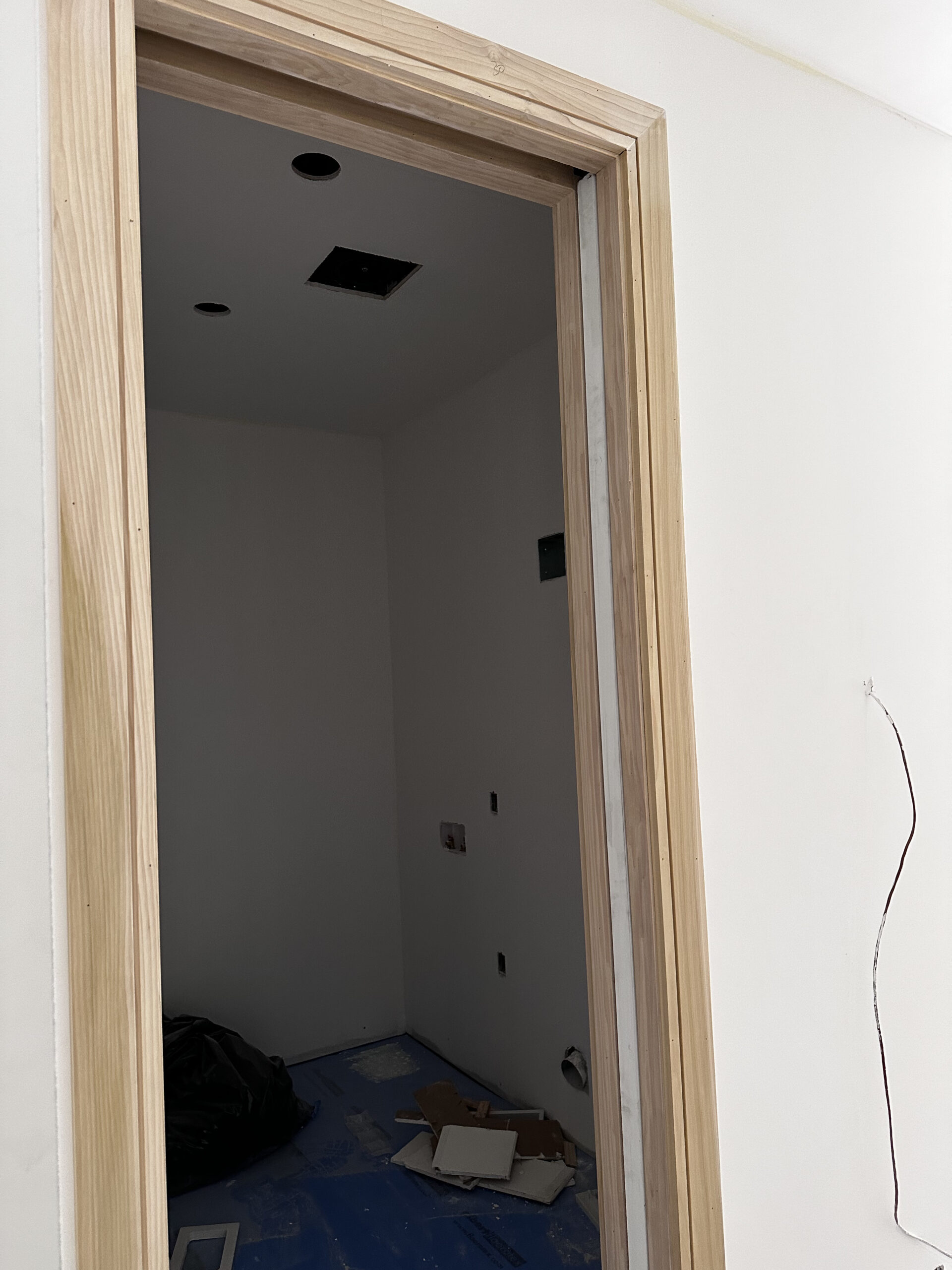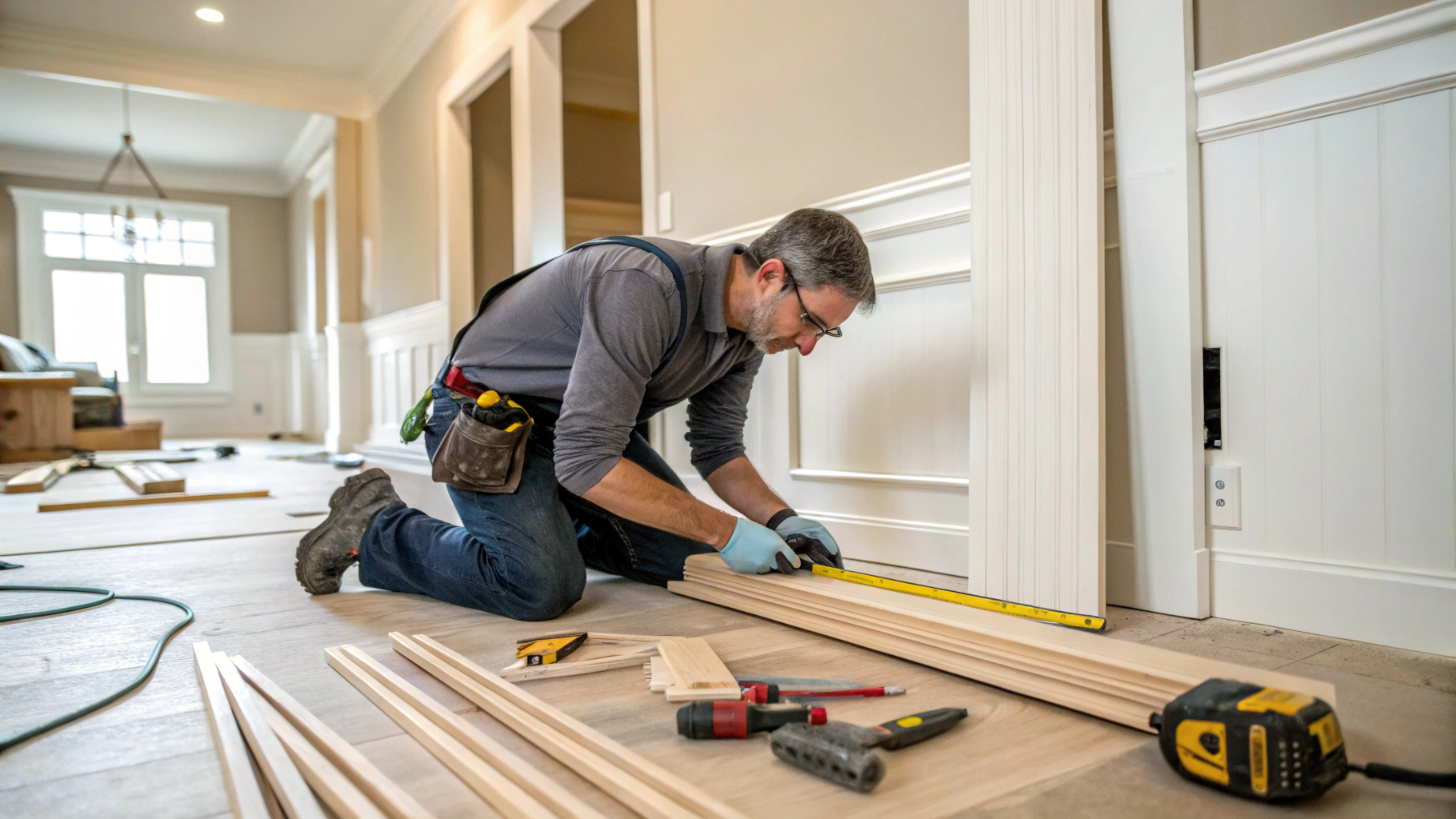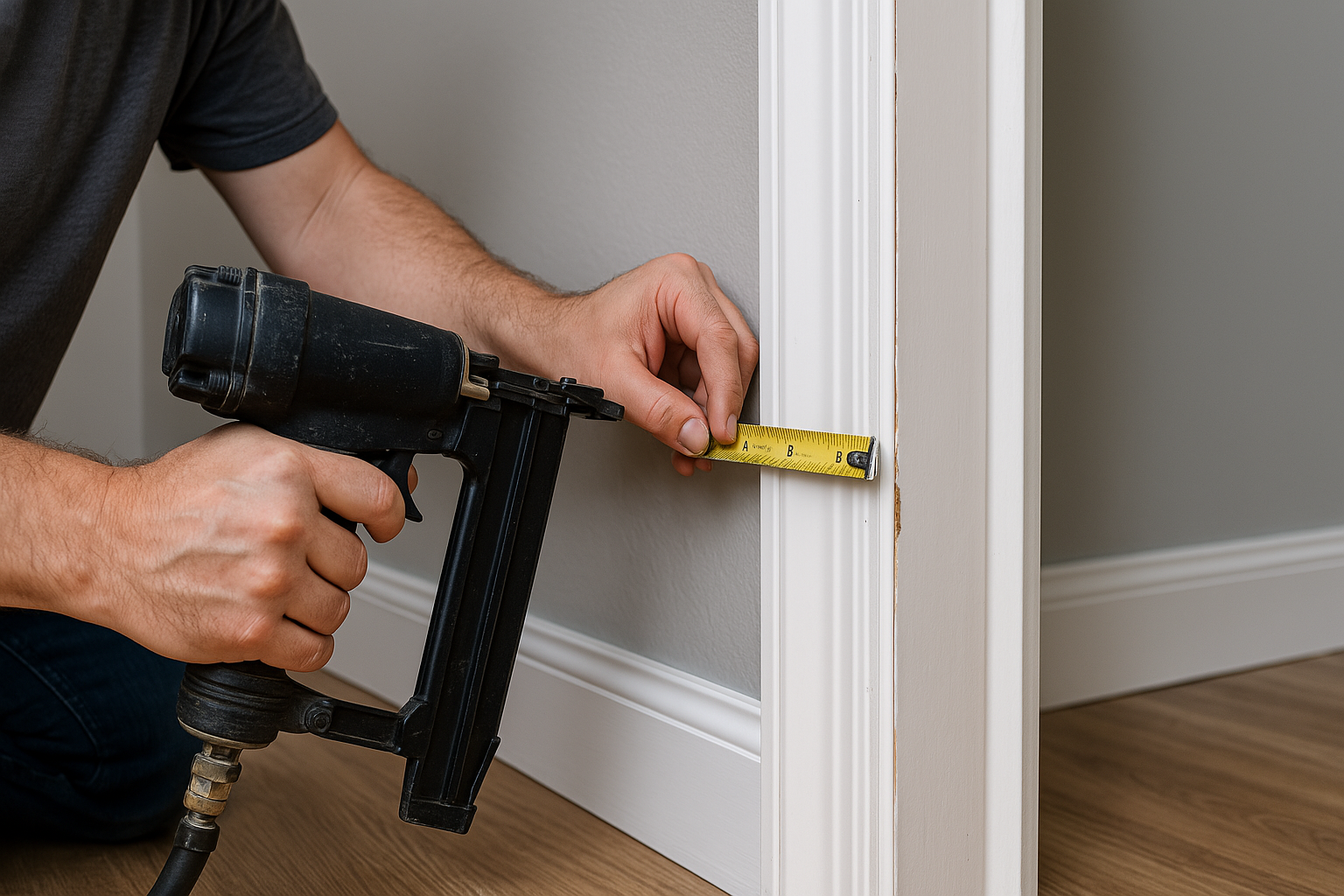Pocket Door Nightmare and How To Avoid It
Pocket doors can be a stylish and space-saving addition to your home, but they can also be a source of frustration if they’re not functioning properly. In this guide, we’ll dive into common pocket door problems and their solutions to help you keep your doors gliding smoothly.
Why Choose a Pocket Door?
Pocket doors are an excellent choice for small spaces where a traditional swinging door might take up too much room. These doors slide into a cavity within the wall, freeing up floor space and offering a sleek, modern look. However, like any other door type, pocket doors can encounter various issues over time.
Common Pocket Door Problems and Solutions
One of the most common issues with pocket doors is binding or sticking. This can make the door difficult to open or close and can be caused by several factors.
Adjust the Track
Ensure the track is level and securely fastened. Over time, the track can become misaligned or loose, causing the door to bind. Check for any obstructions or debris that might be causing the door to bind and clear them away.
Lubricate the Hardware
Apply a light lubricant to the rollers, and other moving parts. This can reduce friction and help the door glide more smoothly. Be sure to use a lubricant that is suitable for door hardware to avoid any damage. A simple wd40 works well but not ideal for a long term solution.
Check Door Alignment
Make sure the door is hanging plumb and square in the opening. If the door is misaligned, it can cause binding. Adjust the hangers or the track to ensure the door is properly aligned.
Squeaking or Rattling Pocket Doors
Another common issue is squeaking or rattling. This can be annoying and is often caused by loose or worn-out hardware. Check for loose screws on the door, frame, and hardware, and tighten them as needed. Loose screws can cause the door to rattle or squeak.
Pocket Door Won’t Close Completely
A pocket door that won’t close completely can leave gaps and affect privacy. Several factors can cause this issue. The main issue is that the door glides were not installed correctly or even worse, the wrong type of door glides were used.
A trim carpenter will dado a groove in the bottom of the door and add a hidden pin between the split jambs so that the door glides on the correct plane.
Check the Track
Ensure the track is free of obstructions and that the door is properly seated on the rollers. Debris or misalignment can prevent the door from closing fully.
Adjust Door Alignment
If the door is slightly off-center, it may not close completely. Adjust the door alignment to ensure it closes fully and seals properly. 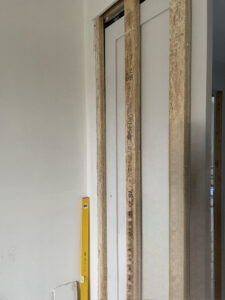
Inspect the Pocket Cavity
Make sure there’s no debris or interference in the pocket cavity that’s preventing the door from closing. Clear away any obstructions that could be blocking the door. Sometimes, rough framing studs can be the biggest issue. If the framing carpenters didn’t leave enough space for the door to slide freely, it could result in operational problems.
In the picture here, the carpenter had to remove the drywall to troubleshoot the wall studs that were intruding the door from sliding within the cavity freely. This is a common issue when working with pocket doors and can be costly to address in the finishing stages of a new home build.
Pocket Door Won’t Open
A pocket door that won’t open can be a significant inconvenience, effectively trapping you in or out of a room. If you find yourself locked in, gently push the door away from you and continue to try and swing the door back and fourth to free up any debris or obstruction.
Pocket Door Sags or Droops
A sagging or drooping door can be both an eyesore and a functional issue. This problem is often caused by loose or worn-out hardware. The rollers or hangers may need to be changed.
DIY Fixes for Pocket Door Basic Issues
Basic Tools and Materials
For simple and basic repairs, you’ll need a few basic tools and materials:
- Screwdrivers
- Lubricant
- Level
- Replacement hardware (if needed)
- Cleaning supplies
Step-by-Step Repair Guide
- Identify the Problem: Determine the specific issue, whether it’s binding, squeaking, not closing properly, not opening, or sagging.
- Gather Your Tools: Collect the necessary tools and materials for the repair.
- Follow the Solutions: Use the solutions provided for each common issue to fix your pocket door.
The Importance of Hiring a Finish Carpenter for Pocket Door Installation
Expertise and Precision
Installing a pocket door is not a DIY project for most homeowners. It requires expertise and precision to ensure the door functions correctly and smoothly. A finish carpenter has the skills and tools necessary to properly install a pocket door, ensuring it is aligned, level, and free of obstructions.
Installing a pocket door is no small feat—it calls for a seasoned hand. A finish carpenter’s expertise is crucial in making sure everything aligns perfectly and functions smoothly. Their skills and precise tools ensure the door is not only level and properly installed but also free from potential obstructions that can cause future headaches. This expertise translates into a pocket door that operates seamlessly and stands the test of time. There are several reasons why hiring a finish carpenter for installing pocket doors is essential:
Ensuring Structural Integrity
Finish carpenters are trained to understand the structure of your walls and how to maintain their integrity. When installing a pocket door, they make sure that the structural support remains strong and isn’t compromised by the door cavity.
Expertise in Precise Measurements
Precision is key when installing pocket doors. Finish carpenters have the experience to take exact measurements, ensuring that the door fits perfectly within the pocket, preventing future issues like binding or sticking.
Proper Alignment and Leveling
A pocket door needs to be perfectly aligned and leveled to function smoothly. Finish carpenters use specialized tools and techniques to make sure the door is properly aligned within the track, avoiding operational problems.
High-Quality Materials and Tools
Trim carpenters have access to high-quality materials and professional-grade tools. This means the door will be installed using the best possible resources, ensuring durability and longevity.
Handling Complicated Installations
If your wall contains electrical wiring, plumbing, or HVAC systems, a trim carpenter knows how to navigate these complexities without causing damage. They can safely install any type of interior door without interfering with other systems in your home.
Aesthetic Excellence
Beyond functionality, finish carpenters ensure that the installation looks good. They pay attention to details like trim and finish, making sure the door enhances the overall aesthetic of your space.
Time and Stress Savings
Installing a pocket door can be a time consuming and stressful project for a DIYer. A trim carpenter can complete the job efficiently, saving you time and reducing the potential for frustration while keeping the overall costs down.
Post-Installation Support
Professional trim carpenters offer post installation support. If any issues arise after the installation, you have someone to turn to for repairs or adjustments, ensuring long-term satisfaction with your pocket door.
Hiring a finish carpenter ensures that any type of interior door is installed correctly, safely, and beautifully, offering peace of mind and a high-quality result.
Avoiding Common Pitfalls
A finish carpenter can avoid common pitfalls such as improper framing, inadequate space for the door to slide, and misalignment. These issues can lead to operational problems and additional repair costs down the line. Hiring a professional from the start can save time, money, and frustration.
Keeping Your Pocket Door in Top Shape
Pocket doors are a fantastic space-saving solution, but they can encounter issues over time. By following the troubleshooting tips and solutions provided in this guide, you can keep your pocket doors functioning smoothly. Regular maintenance, such as lubricating hardware and checking for loose screws, can prevent many common problems.
If you’re still having trouble with your pocket door, it may be time to consult with a Toronto trim carpentry company that offers service. They can provide the expertise and tools needed to fix persistent or complex issues, ensuring your pocket door remains a stylish and functional part of your home.
In the Toronto GTA area, skilled trim carpentry companies that offer all aspects of services can help you with all your pocket door needs, from installation to repair and maintenance. Don’t let a problematic pocket door detract from your home’s beauty and functionality. Take action today to keep your doors gliding smoothly.
Get a Free Quote
Learn How Miter5 Can Help with Your Trim Carpentry Projects

